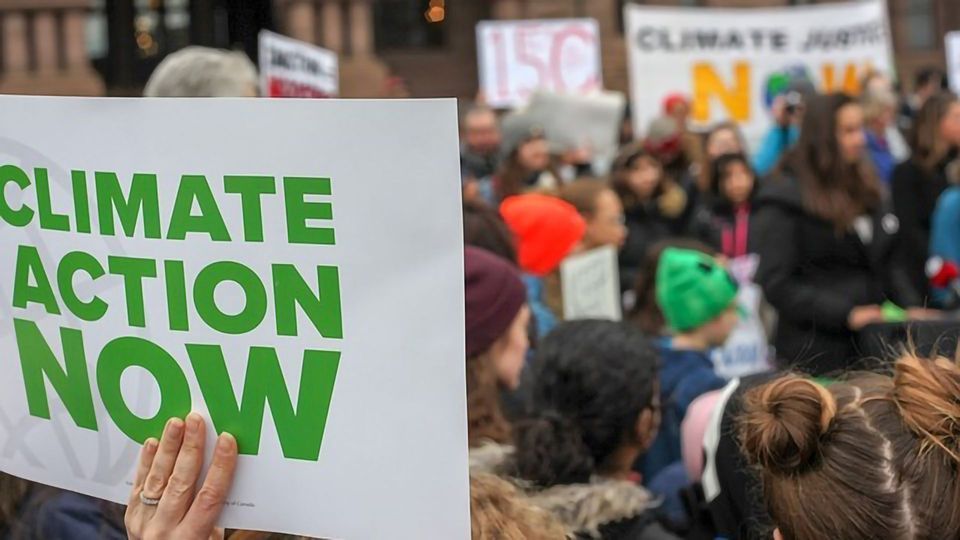How Can We Prompt Individuals To Take Action on Climate Change?

Complete the form below to unlock access to ALL audio articles.
Why is it that more individual actions are not taken to combat climate change? What should be done to embolden individuals to act within their scope of action? To answer these questions, a researcher at the University of Geneva (UNIGE), Switzerland, integrated the results of the scientific literature on climate change in the framework of a Geneva Science-Policy Interface (GSPI) policy brief. The objective was to synthesize the factors that obstruct citizen action and offer solutions that could enable political authorities to remedy this deadlock.
Climate change has a predominant place in scientific research, in both the natural sciences and the social sciences. Yet climate studies are not necessarily accessible to decision-makers, either because they are too complex, are written for a target readership, or are published at the wrong time. This is why the Geneva Science-Policy Interface (GSPI) produces policy briefs; their purpose is to synthesize the scientific literature published about a specific field, popularize it and transmit it to the right people at the right time,” explains Nicolas Seidler, Executive Director of the GSPI. Behavior in the face of climate change is the theme of the GSPI’s first policy brief; it is the fruit of the work of Tobias Brosch, a professor in the Psychology Section of the Faculty of Psychology and Education (FPSE) at UNIGE.
Five psychological barriers impede change in individual behavior
Based on more than 400 studies in psychology, neuroscience, affective science and behavioral economics, Brosch identifies five categories of barriers that prevent individuals from making any potential behavior change to fight climate change. Then for each category he makes recommendations for breaking down the barriers.
“The first category concerns perceptual barriers,” explains Brosch. “Our brain has trouble perceiving the phenomenon of climate change because it is abstract: we can neither see nor touch it directly.” To topple this first barrier, he notes that it is necessary to focus attention on the direct impact that climate change can have on the individual by translating it into concrete experiences. “This means making the phenomenon local and immediate, and exposing its consequences. We are, for example, in the process of finalizing a virtual reality-based simulation that enables you to feel the impact of climate change over Geneva.”
The second barrier concerns a person’s own specific interests and immediate personal benefits. “Some people don’t see how changing their behavior can be beneficial. So we need to emphasize various advantages that stem directly from this behavior change: biking is good for your health, sharing expands your social network, driving an electric car is a sign of high economic and social status,” says Brosch. “Rewarding a behavior is also a good way to influence habits.”
Moral barriers make up the third category. At the present time, acting on climate change is not yet considered one of the duties of a good person. How can climate change be linked to morality? “One way is through religion, for example when Pope Francis declared that protecting the planet is a religious duty,” explains Brosch. In addition, communication with the public must be adapted to a range of political sympathies, considering that people whose politics are left wing are usually more receptive to the environmental cause than conservatives.
The fourth category concerns social barriers. Why should I change my behavior if my neighbor travels by plane all year round? If we notice that others are doing nothing to protect the climate, it is difficult to make sacrifices oneself. “Communication is paramount: the public must be told that many people do act for the sake of the climate and that this mobilization is constantly growing,” adds the researcher. “To this end, the latest protests and the “Greta effect” are a good driving force.”
Barriers to action constitute the last category, and one of the most significant ones. “People often simply do not know what to do to counteract climate change on an individual scale, or else the task seems too daunting,” says Brosch. He recommends communicating with people about the behaviors that have the greatest impact. “My mother always used to tell me to turn the light off when I leave a room,” he recalls. “That’s fine, but the impact is minimal. By contrast, flying less frequently, riding your bicycle instead of driving, insulating your house properly or eating less meat—now there is change that is perceptible!”
Synthesize, popularize and recommend to stimulate action
Once the five barriers are clearly identified, these recommendations should be conveyed to the political authorities, which can spur citizens to change their behavior. “The ‘Greta effect’ has already generated a tremendous surge of mobilization among young people, producing a direct effect on social and moral barriers and barriers to action,” notes Brosch. But that is not enough. This is why political authorities, just like academic authorities such as UNIGE, must strengthen their ties with international organizations and work towards the search for and communication about actions that are within anyone’s reach.
This article has been republished from the following materials. Note: material may have been edited for length and content. For further information, please contact the cited source.

